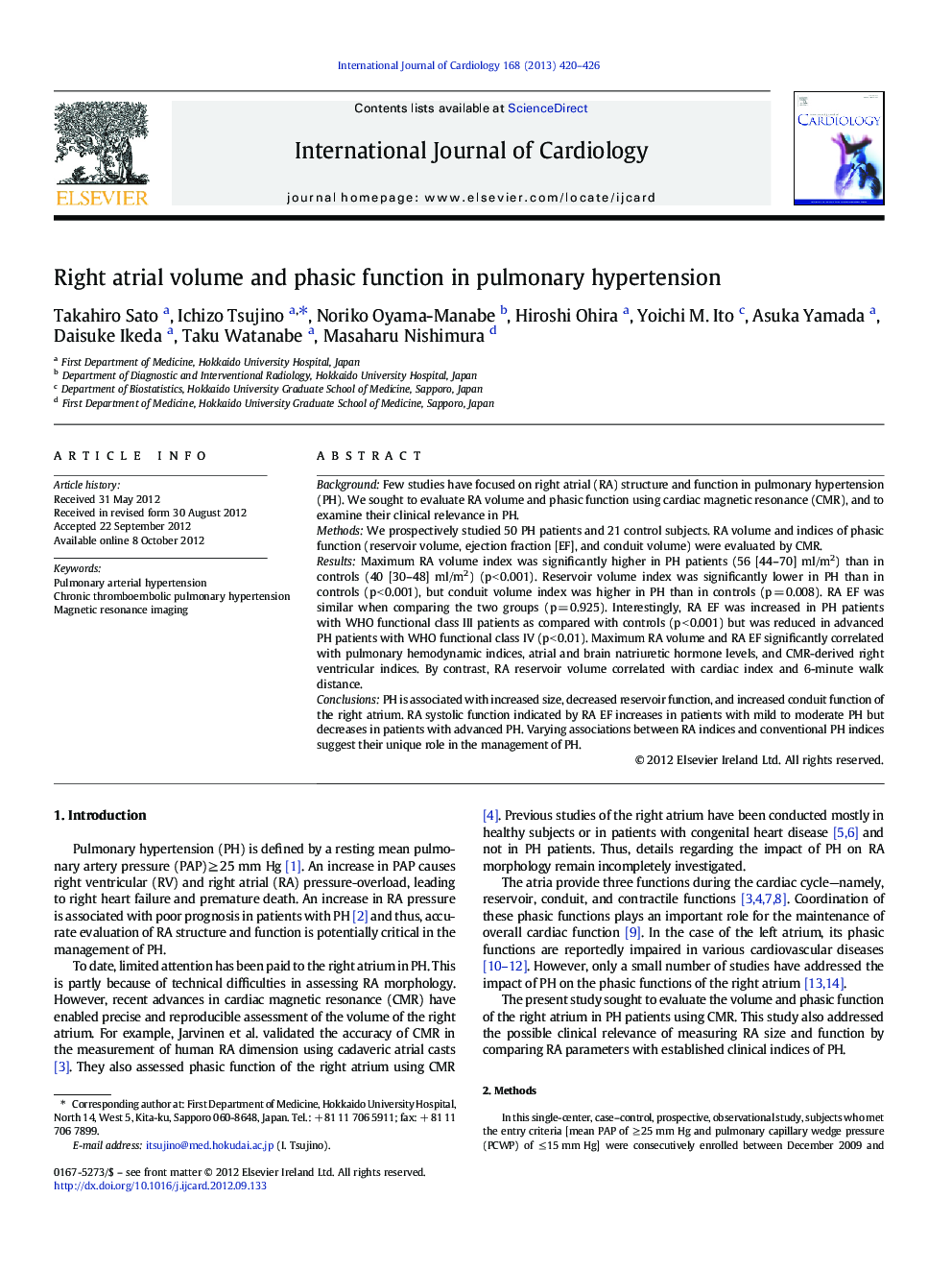| Article ID | Journal | Published Year | Pages | File Type |
|---|---|---|---|---|
| 5976714 | International Journal of Cardiology | 2013 | 7 Pages |
BackgroundFew studies have focused on right atrial (RA) structure and function in pulmonary hypertension (PH). We sought to evaluate RA volume and phasic function using cardiac magnetic resonance (CMR), and to examine their clinical relevance in PH.MethodsWe prospectively studied 50 PH patients and 21 control subjects. RA volume and indices of phasic function (reservoir volume, ejection fraction [EF], and conduit volume) were evaluated by CMR.ResultsMaximum RA volume index was significantly higher in PH patients (56 [44-70] ml/m2) than in controls (40 [30-48] ml/m2) (p < 0.001). Reservoir volume index was significantly lower in PH than in controls (p < 0.001), but conduit volume index was higher in PH than in controls (p = 0.008). RA EF was similar when comparing the two groups (p = 0.925). Interestingly, RA EF was increased in PH patients with WHO functional class III patients as compared with controls (p < 0.001) but was reduced in advanced PH patients with WHO functional class IV (p < 0.01). Maximum RA volume and RA EF significantly correlated with pulmonary hemodynamic indices, atrial and brain natriuretic hormone levels, and CMR-derived right ventricular indices. By contrast, RA reservoir volume correlated with cardiac index and 6-minute walk distance.ConclusionsPH is associated with increased size, decreased reservoir function, and increased conduit function of the right atrium. RA systolic function indicated by RA EF increases in patients with mild to moderate PH but decreases in patients with advanced PH. Varying associations between RA indices and conventional PH indices suggest their unique role in the management of PH.
